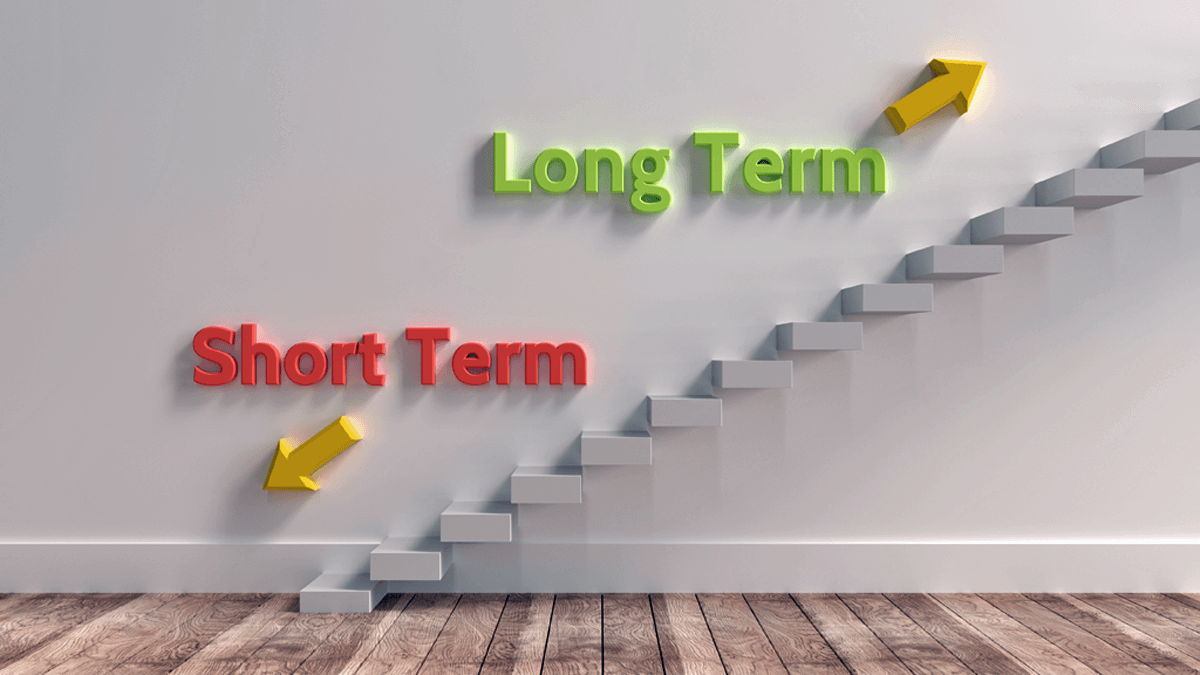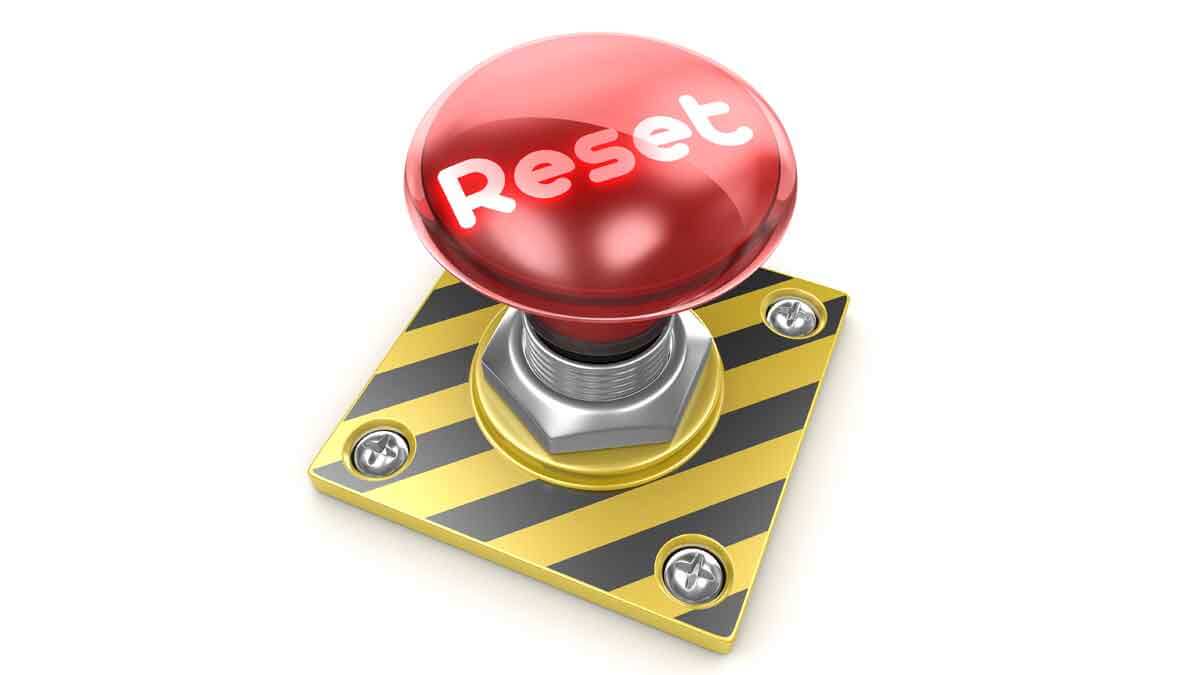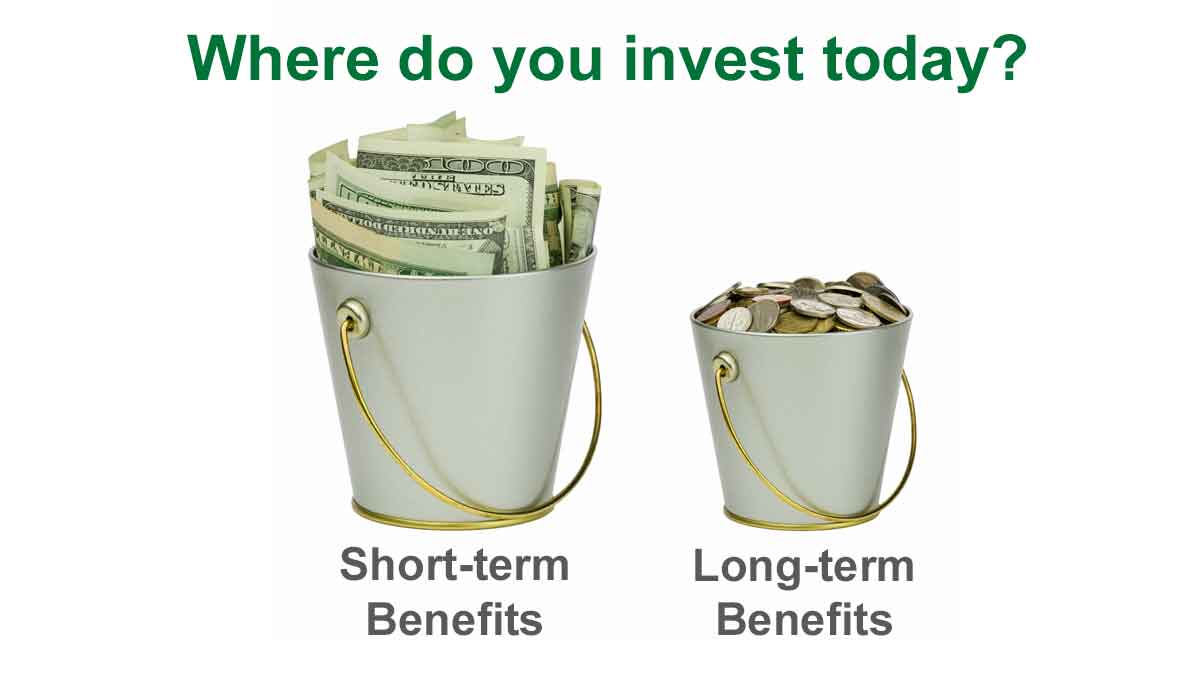Of course, employees will be laughing; they’ve heard this one before. When satisfying the expectations of Wall Street analysts conflicts with building the firm’s long-term competitive strength, guess which usually wins? Any employee who’s been through travel restrictions, investment delays, hiring freezes, etc. knows the answer.
More in 2-minute video at 5. Shareholder wealth is a poor goal
Research published in Harvard Business Review showed companies exhibiting long-term behavior have higher revenue, earnings, job creation, and market capitalization. Clearly, the key to shareholder wealth is long-term behavior, not short-term. If you’re at a financial review discussing revenue, price and margins, you are engaged in a spectator sport. What if your meetings three years ago focused on developing blockbuster products? That was a participant sport, because your longer time horizon allowed you to impact future financial performance. Not just talk about it.
More in video, Leader’s Guide to B2B Organic Growth series, Video Lesson #7
If you expect your business to be around in 10 years, why are you focusing so much of your energy on this quarter? Especially since less than 10% of your company’s stock value comes from current earnings… while the rest comes from the market’s expectations of your future earnings. Sure, this is what most leaders focus on… but not leaders like Jeff Bezos or Steve Jobs.
More in article, The Inputs to Innovation for B2B
In the long-term stockholder and employee interests align. This is also true of customer and community interests. In the long-term, it’s in the best interests of everyone—except your competitors—for your business to develop high-value products, sustain strong growth, provide stable employment, and increase market capitalization. Given this alignment, doesn’t it seem odd that many business leaders seem so fixated on the near-term?
More in e-book, Leader’s Guide to B2B Organic Growth (Lesson 30)
Developing B2B customer insight skills for this growth requires a commitment your competitors may be unwilling to make. Good. You need them to remain shortsighted. As you gain insights, you may enjoy a bonus: Customers are impressed with suppliers that listen to them… and often offer near-term adjacent opportunities.
More in white paper, Catch the Innovation Wave (page 15).
Business leaders focused on the short term are just showing up. They compete for market share this year, hit the reset button, and repeat the process next year. No serious, long-term capability-building. Count yourself fortunate if you compete against such companies. They’re easy to beat with the right time horizon.
More in article, Build Growth Muscles at Your Company (Originally published in B2B Organic Growth Newsletter).
In a now-obscure 1972 HBR article, Richard Vancil complained long-term product development expenses were buried within annual operating plans… allowing short-sighted managers to raid them. Shocking, I know. Divide your budget into short-term and long-term benefit buckets. And make sure someone is guarding the long-term bucket.
More in article, The Commodity Death Spiral (Originally published in B2B Organic Growth newsletter).
Of course, employees will be laughing; they’ve heard this one before. When satisfying the expectations of Wall Street analysts conflicts with building the firm’s long-term competitive strength, guess which usually wins? Any employee who’s been through travel restrictions, investment delays, hiring freezes, etc. knows the answer.
More in article, Why Maximizing Shareholder Value is a Flawed Goal (Originally published in B2B Organic Growth Newsletter).








